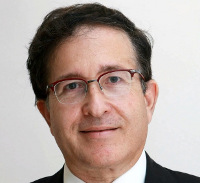Why Israel's tech DNA is an ideal match for serial acquirer Broadcom

For high-tech investors and company executives, it's often good news to hear that the start-up they've sunk their time and energy into is being bought out by a big multinational. It's not always the case for workers, though, who often find themselves squeezed out as the new bosses consolidate operations around the world.
For Israeli start-ups being bought out fabless semiconductor giant Broadcom, the situation is different, however – and the start-ups are likely to need to clear some space out for new employees, according to Broadcom's Dr. Shlomo Markel, VP office of the CTO and director of the company's Israel operations. "Over the past decade, Broadcom has purchased eleven companies in Israel, and today our employee total in Israel is greater than the accumulated number of people who worked at these companies when we bought them. That means we're hiring, not firing," he says.
After the US and India, Israel, with about 800 employees, has the third largest headcount in Broadcom. Israeli high-tech workers are a good match for the US-based maker of networking and communications products and chips, with Broadcom buying 11 Israeli companies in the last four years, three of which were acquired in the last 18 months, Markel adds.
Broadcom is a 'serial acquirer' of small companies that have developed innovative technologies. Since 1999, Broadcom has acquired 48 companies, mostly start-ups (although there were some larger acquisitions, like the $3.7bn purchase of NetLogic in 2011).

Some of the company's "best buys" were in Israel, Markel says. "For example, our acquisition of SE Squared, acquired in 2011, provided us with the heart of Broadcom's NFC solutions for mobile devices," he says, adding: "Dune Networks (acquired in 2009) high-speed switch fabrics have become a central component of our datacenter and cloud technologies.
"With our acquisition of Octalica (2007)," continues Markel, "we have been able equip many Broadcom chips with MoCA (Multimedia over Coax Alliance) capabilities... With the acquisition of Broadlight (2012), we can now offer our customers PON (passive optical network) solutions, a fast growing market. And with the purchase of Provigent (2011), we got access to top microwave backhaul technology."
Instead of bringing its acquisitions into Broadcom's existing business divisions, the start-ups for the most part continue operating as they did before the buyout, essentially becoming a new R&D lab for the mothership. Provigent provides an interesting example of how Broadcom works in such cases, often adjusting itself to accommodate the way its new acquisition operates.
"I can't say that we changed our roadmap to adjust it to what an acquisition was doing," said Markel. "But we may jump a few steps ahead on the roadmap if we find a company doing something very interesting." That was the case with Provigent, he said: "we were in optical backhaul, not microwave, and we might have held off on that had we not integrated Provigent with our operations."
That Israeli companies provided many of Broadcom's opportunities to expand the company's offerings is exactly what Markel would have expected, with Broadcom not only finding a lot of talent in Israel, but also a "start-up spirit" that is harder to get elsewhere.
"Whether it's because of the way they were educated or other factors, there is a general willingness in Israel to try new things, to dare to take a chance," Markel says.
It's a spirit that fits Broadcom well. "With all our acquisitions, we've shown that we are willing to embrace new businesses and bring them into the Broadcom universe," Markel said. "In that sense, Broadcom's DNA closely matches that of Israel's. It's no wonder we've found great opportunities that we feel comfortable with here.